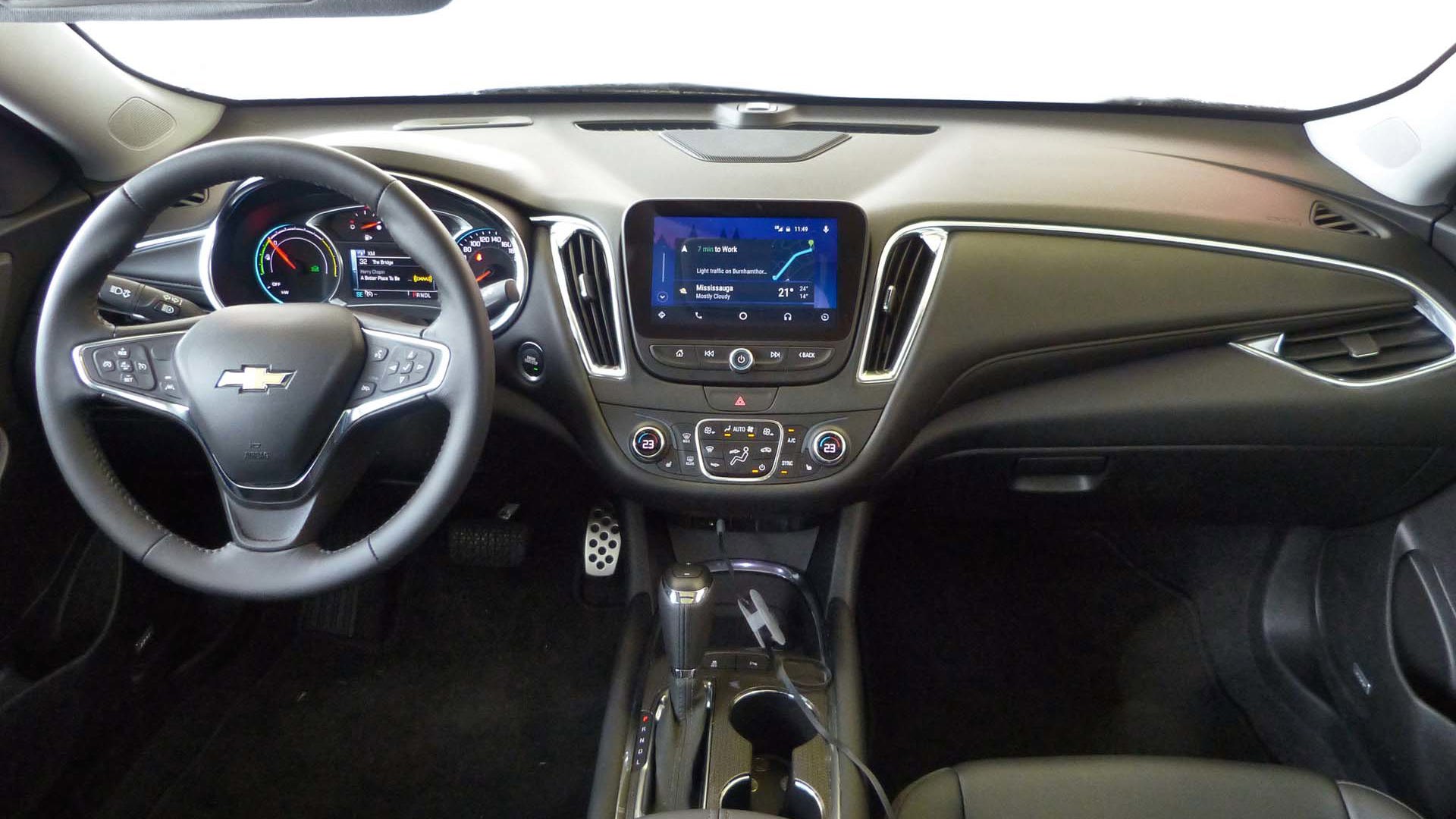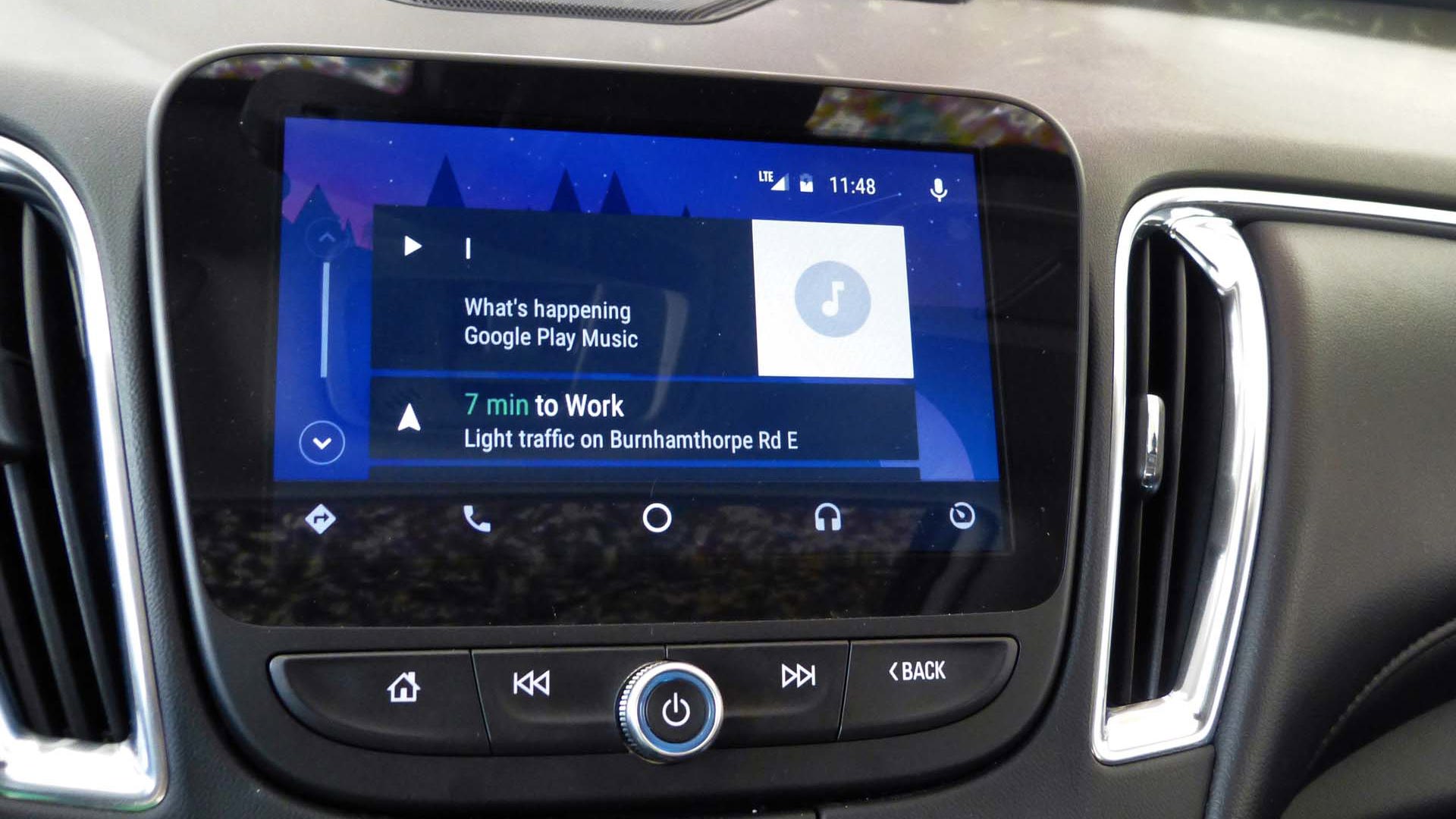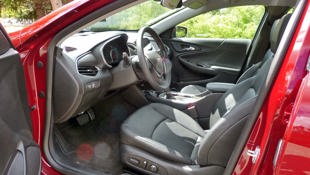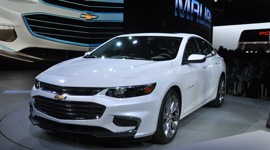 AutoTrader SCORE
AutoTrader SCORE
-
INTERIOR8/10
-
PERFORMANCE7/10
-
EXTERIOR STYLING7/10
-
FUEL ECONOMY9/10
-
COMFORT8/10
The mid-size sedan of today is the large sedan of yesteryear. And yet the fuel economy of a mid-size sedan today is the fuel economy of a sub-compact of yesteryear. That statement is even more accurate when you look to the fleet of mid-size sedan hybrid vehicles currently floating about in the market.
Fans of high score leaderboards will enjoy the fuel economy displays which give real-time reports and trip history – a tool which has a dramatic impact on how I drive whenever I test a hybrid.
And with the addition of a newly revised Malibu, Chevrolet is very much in the game.
This new Malibu was unveiled in 2016 and immediately elevated the nameplate into contention. It’s larger, of course, and yet lighter. The interior is no longer a festival of tacky blue calculator screens; now the rich MyLink display in the dashboard is matched up to an equally rich multi-colour TFT nestled between large, clear gauges.
The TFT cluster is reminiscent of the Cadillac CUE TFT screen with a deep menu of options from Audio to service history, navigation, fuel economy information and more.
Fans of high score leaderboards will enjoy the fuel economy displays which give real-time reports and trip history – a tool which has a dramatic impact on how I drive whenever I test a hybrid. I was stoked with my 5.4 L/100 km figures for a while, but then a big highway drive saw me bloat to 6.5. (I’ll admit, I worked hard to recover that lost economy and get back to my previous best score….) Incidentally, the official numbers for the Malibu are 5.0/5.1/5.1 L/100 km city/highway/combined. That’s better than every other mid-size hybrid bar the Honda Accord on combined numbers, but those numbers are a bit ambitious. 5.0 L/100 km might be possible in the city, but real-life highway driving taxes the hybrid system mightily. I saw closer to seven when running with traffic.
Only when I put on my tweed hat and puttered along in the right lane did I see numbers close to that rating. But before you think me a whinger, 6.5 is a really, really good average when you throw in a few hundred kilometres of highway driving in a mid-size sedan. It’s on par with the number I achieved in a tiny wee Chevrolet Sonic with a CVT some time ago.
Behind the Scenes: The Chevrolet Malibu Hybrid
And unlike the Sonic, the Malibu never felt wanting for power. Its 1.8L four-cylinder engine with Variable Valve Timing is good for just 122 hp and 129 lb-ft of torque, but paired with the electric motor it produces a stout 182 hp and 277 lb-ft of torque. That’s more torque than the 2.0L turbo (258 lb-ft, 250 hp) and it’s available much earlier: as in, from zero rpm.
It's a perfectly driveable car in most scenarios. Most. The two-motor drive unit and planetary gear transmission feel smooth and unobtrusive 80 percent of the time, but in the rare moment when you’re accelerating hard from a casual speed – say from 80 km/h when you’ve just been using EV power for a couple of kilometres, the engine and transmission produce a horrible droning like the worst CVT units from a decade ago. It’s not the norm, and there is a particular set of circumstances needed to generate it, but it grated on me.
Aside from that, the smoothness, responsiveness and general heft of this Volt-derived powertrain are spectacular. EV-only range is obviously nowhere near Volt levels due to a much smaller battery pack, but I could still coax long periods of silent cruising from the little unit.
From a handling standpoint the Malibu is a dramatic improvement over its predecessor. It’s typically GM-soft and floaty, but in a really pleasant sort of “Well durr, it’s a GM and GM buyers like this feeling” way. The steering is over-boosted and light which makes for busyness in crosswinds at highway speeds, but nothing overwhelming. There’s an appropriate amount of body roll and pitch from the McPherson-strut front and multi-link rear suspension, and the Malibu does a remarkable job of hiding the roughness I was expecting from the upgraded 17-inch alloys standard on this model (lower trim Malibus get 16s).
I was pleasantly surprised by the passenger volume, and chuckled at the 60/40 seats in the rear – these are handy for skis or something, I suppose, but the battery bump in the boot eats up 119 L of volume for a scant 328 L total. This might be the only real sacrifice the hybrid drivetrain makes – other than the 168 kg added to the 1,400 kg base Malibu, that is. Still, at 1,568 kg the Malibu is lighter than all but the Toyota Camry Hybrid among its competitors.
Truthfully, that weight penalty is not noticeable in everyday driving, and I wouldn’t expect it to be an issue for most Malibu hybrid buyers. Track drivers are probably not buying this car – though if they did they might be entertained by the way the torquey electric motors frequently overwhelm the front tires under acceleration. I know I was.
I was also entertained by the Bose speaker system – an audio upgrade delivered courtesy of the $1,995 Leather package that also added leather, heated and power-adjustable front seats. I should clarify. It wasn’t the audio quality that entertained me, rather the audacity of a $2,000 upgrade for features many at this price point expect standard. The addition of the “Bose speaker system” stuck out as a cry of “This package is worth it, honest!”
The driver convenience package is worth it, however. City-speed automatic braking, front and rear park assist, blind-zone detection, lane-keep assist, forward collision alert, rear cross-traffic alert and automatic high beams are a reasonable $1,450 add-on. That 8-inch MyLink screen I mentioned earlier is part of the also appropriately priced $995 Convenience and Technology package. That gives you wireless charging, a 120V household power outlet, more USB ports, auto-dimming rear mirror and a leather steering wheel and shift knob. Not nav though, that’s another $775 – which is cheeky.
Tech heads will love that this car has not only wireless charging, but Android Auto/Apple Carplay – something I swear by. Android Auto especially is a good reason to avoid the nav option. Tech heads might also like the onboard wi-fi but let’s be honest: Once the free subscription runs out this is just another data plan you’re paying for monthly. Really want data for your passengers? Pay for a data package on your phone and use it as a mobile hotspot. Job done.
Wi-fi aside, there is remarkably little about this car that is gimmicky. Even the instrument cluster surround has dropped its try-hard shape and tacky fake aluminum in this revision and the interior looks thoroughly tasteful.
This is a well-executed, well-styled, perfectly good car with solid fuel economy. The 2016 Chevrolet Malibu Hybrid is comfortable, smooth and well-appointed and can stand proudly alongside any of its competitors.
| Warranty: 4 years/100,000 km; 6 years/110,000 km powertrain; 7 years/unlimited distance corrosion perforation; 4 years/100,000 km roadside assistance |
| Model Tested | 2016 Chevrolet Malibu Hybrid Sedan |
|---|---|
| Base Price | $28,850 |
| A/C Tax | $100 |
| Destination Fee | $1,650 |
| Price as Tested | $37,260 |
|
Optional Equipment
Leather Package – $1,995, Driver Convenience Package – $1,450, Sunroof – $1,425, Convenience and Technology Package – $995, MyLink with Navigation – $795
|
|














































